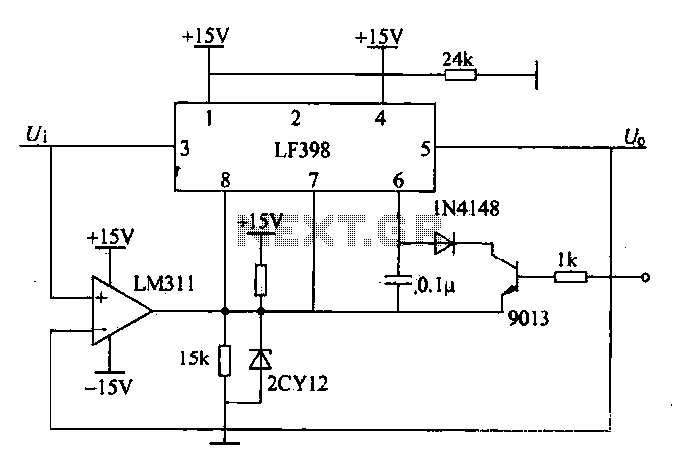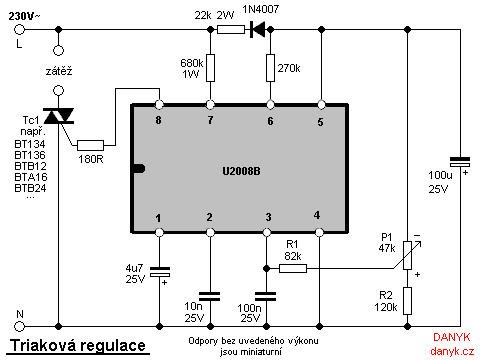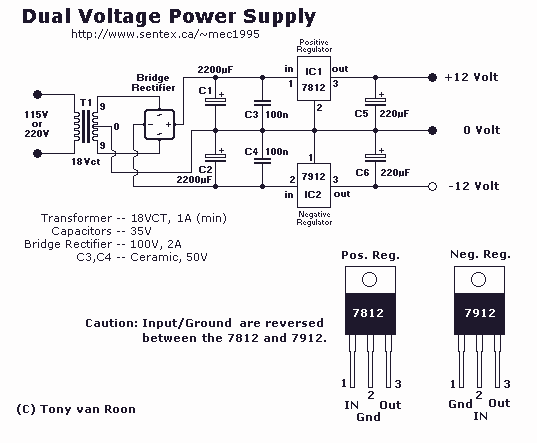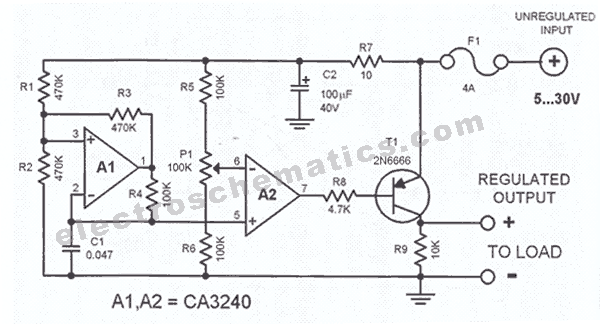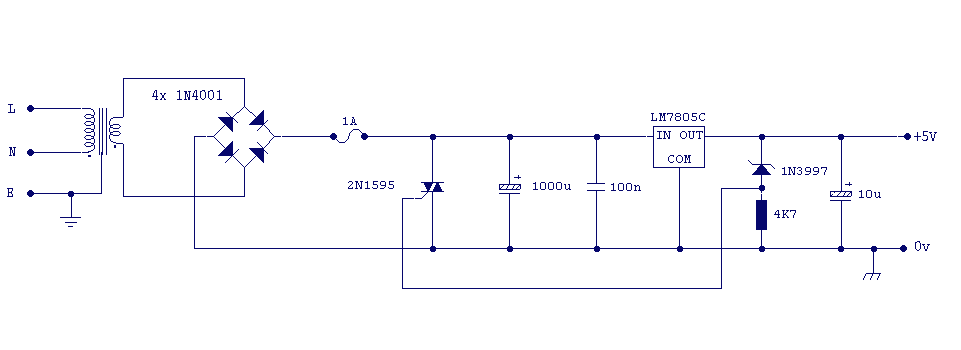
Voltage InverterII
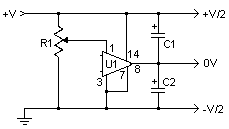
This simple and inexpensive circuit can produce a dual (positive and negative) voltage from a single supply input. It is therefore extremely useful for powering opamp and other circuits that require a dual voltage from a single battery. The circuit will operate at an input voltage from around 5V to 20V and produce a output from ±2.5V to ±10V.
The described circuit utilizes a charge pump configuration to generate dual output voltages from a single input voltage source. This is particularly advantageous in applications where space and cost are critical, such as in portable devices powered by batteries.
The circuit typically consists of a few key components: capacitors, diodes, and an integrated circuit (IC) designed for voltage inversion. The input voltage is connected to the IC, which alternates the charge and discharge cycles, allowing the circuit to generate both positive and negative voltages. The output capacitors smooth the resultant voltage, ensuring a stable and usable power supply.
For an input voltage range of 5V to 20V, the output voltage can be adjusted by selecting appropriate capacitor values and the specific IC used. Commonly, the output will be set to ±2.5V for lower input voltages and can reach up to ±10V for higher input voltages. This flexibility makes the circuit suitable for a variety of applications, including operational amplifiers, analog signal processing, and other electronic components that require dual polarity power supplies.
The design should also consider the load current requirements, as the performance of the charge pump can vary based on the load connected to the output. It is essential to ensure that the selected components can handle the expected current without significant voltage drop or overheating. Additionally, filtering capacitors may be included at the output to further stabilize the voltage and reduce noise, enhancing the overall performance of the circuit.
In conclusion, this dual voltage generation circuit is a practical solution for powering devices that require both positive and negative voltages from a single supply, offering simplicity, cost-effectiveness, and versatility in design.This simple and inexpensive circuit can produce a dual (positive and negative) voltage from a single supply input. It is therefore extremely useful for powering opamp and other circuits that require a dual voltage from a single battery.
The circuit will operate at an input voltage from around 5V to 20V and produce a output from +-2.5V to +-10V. 🔗 External reference
The described circuit utilizes a charge pump configuration to generate dual output voltages from a single input voltage source. This is particularly advantageous in applications where space and cost are critical, such as in portable devices powered by batteries.
The circuit typically consists of a few key components: capacitors, diodes, and an integrated circuit (IC) designed for voltage inversion. The input voltage is connected to the IC, which alternates the charge and discharge cycles, allowing the circuit to generate both positive and negative voltages. The output capacitors smooth the resultant voltage, ensuring a stable and usable power supply.
For an input voltage range of 5V to 20V, the output voltage can be adjusted by selecting appropriate capacitor values and the specific IC used. Commonly, the output will be set to ±2.5V for lower input voltages and can reach up to ±10V for higher input voltages. This flexibility makes the circuit suitable for a variety of applications, including operational amplifiers, analog signal processing, and other electronic components that require dual polarity power supplies.
The design should also consider the load current requirements, as the performance of the charge pump can vary based on the load connected to the output. It is essential to ensure that the selected components can handle the expected current without significant voltage drop or overheating. Additionally, filtering capacitors may be included at the output to further stabilize the voltage and reduce noise, enhancing the overall performance of the circuit.
In conclusion, this dual voltage generation circuit is a practical solution for powering devices that require both positive and negative voltages from a single supply, offering simplicity, cost-effectiveness, and versatility in design.This simple and inexpensive circuit can produce a dual (positive and negative) voltage from a single supply input. It is therefore extremely useful for powering opamp and other circuits that require a dual voltage from a single battery.
The circuit will operate at an input voltage from around 5V to 20V and produce a output from +-2.5V to +-10V. 🔗 External reference
